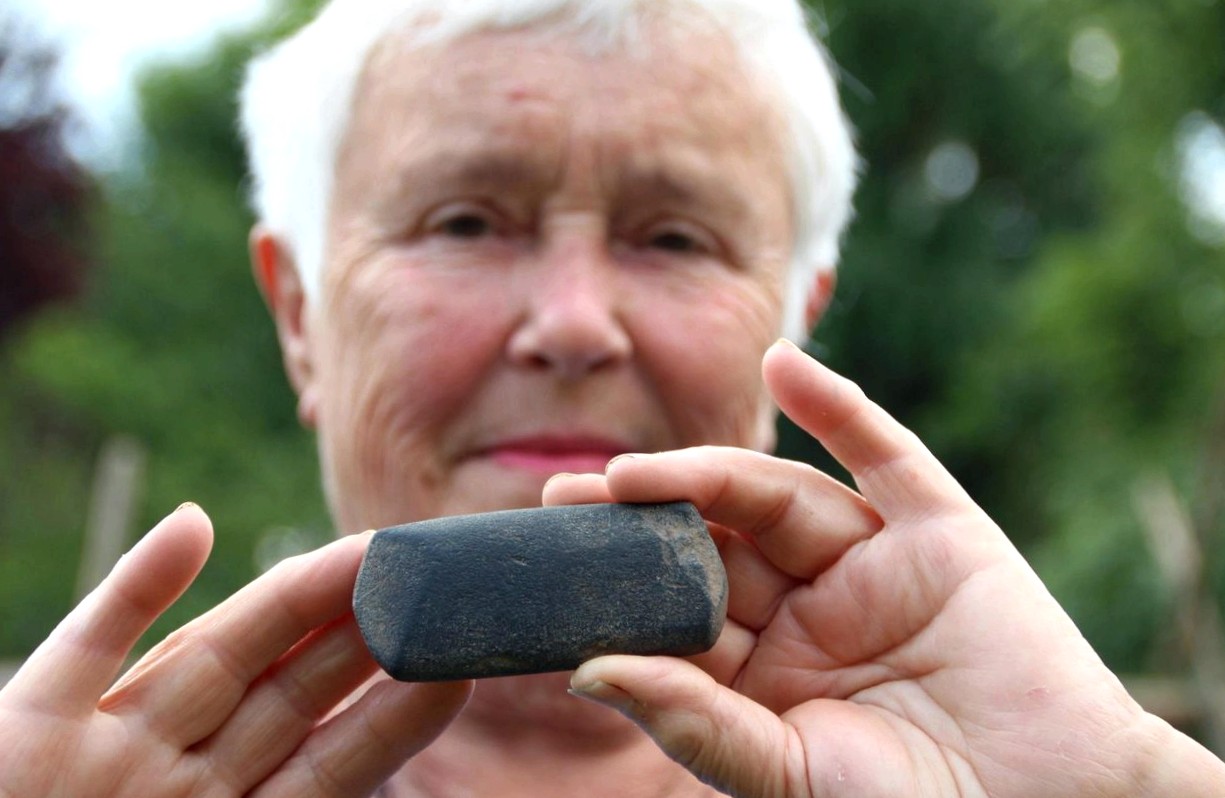First find from ebern’s stone age

For the district’s local historian, it is "a small sensation in local history"; the regional archaeology officer of the state office for the preservation of historical monuments speaks of a "remarkable find", but also "nothing unusual. It is about a piece of basalt stone about 8 centimeters long, 3 centimeters wide and 1.5 centimeters thick. Now basalt is nothing special in the region. But if the good stucco was worked by hand thousands of years ago, then local historian gunter lipp becomes clairvoyant. Especially if it was found in ebern, where no stone-age finds have been documented so far.
Discovery in the bean patch
At the beginning of may, the former teacher elisabeth sohnlein had discovered the ratsel-like gray stone while gardening on her property in the muhlenviertel. Archaeological finds, a kind of spearhead, a stone awl or a spindle made of red stone had already been discovered there in the past eight years when she was digging up the flowerbeds. Plus lots of ceramic shards, teeth and bones.
Biology, chemistry and geography were the subjects taught by the padagogue. Mineralogy and the development of man have been her subjects since her student days, and she has developed an eye for prehistoric pieces, not least because she liked to go to the natural history museum with her pupils in regensburg.
For the past twelve years, the native of lower franconia has been living in ebern again. In the beginning, her husband took over the gardening work when he needed care, she herself. Every time she discovered something, her husband put the brakes on the pensioner’s archaeological enthusiasm. "You are imagining things", he said, which is why she presented her findings only to her grandchildren, but otherwise kept them to herself.
Curiosity wins
The handy stone she found in the bean patch about six weeks ago made the study councilor a.D. But now curious. It had, clearly recognizable, been artificially processed. But for what purpose? In order to clarify this, she consulted the district curator of local history, who in turn turned to oskar gehring, who has been an honorary employee of the office for the preservation of historical monuments and a member of the bavarian society for archaeology for almost four decades.
The specialist for soil finds from losbergsgereuth immediately recognized the stone axe, which must be 6000 to 7000 years old, as he speculated. Such relics from the middle stone age he himself has already found, for example at ottneuses. At that time, the people in the region began to settle down and to practice agriculture and animal husbandry. Especially in the vicinity of a river, as in this case not far from the ebern muhlbach, tool finds are therefore not uncommon, says oskar gehring, who himself has thousands of finds from germanic, roman or celtic times.
The weibe stain
The stone axe discovered in ebern was badly worn on the cutting edge. The 68-year-old suspects that the stone was later used for something else as well.
In issue 2 of the "heimatblatter years ago, fritz klemm, member of the burger club ebern, documented all stone-age finds in the region. According to the report, scrapers, drills, stone axes and other tools from that time have repeatedly turned up in the baunach, itz and lautergrund regions of germany. Only not in ebern and pfarrweisach. That’s why gunter lipp finds elisabeth sohnlein’s fund so spectacular. The weibe stain on the map of stone-age soil monuments can be erased.
Find from 1966
Ralf obst is responsible for the northern bavarian region at the office for the preservation of historical monuments in seehof castle. He has already contacted elisabeth sohnlein. Fruit will examine the find and probably miss ebern the point on the stone age map.
What she will do with her stone-age axe, female elisabeth sohnlein does not yet know. Through her sister, she has just learned that her father, dr. Hermann sohnlein, had found a blade sharpened on one side in the garden on hirtengasse in spring 1966. A piece, which according to the information should be in the fundus of the heimatmuseums.
Today, 50 years later, when her daughter is working in the garden on the same spot, she feels "a little bit happy" on the one hand and confirmed by oskar gehring in her track for the special soil treasures. On the other hand, the knowledge of the historical soil also annoys her: "now i look even more closely, and that’s almost ludicrous."